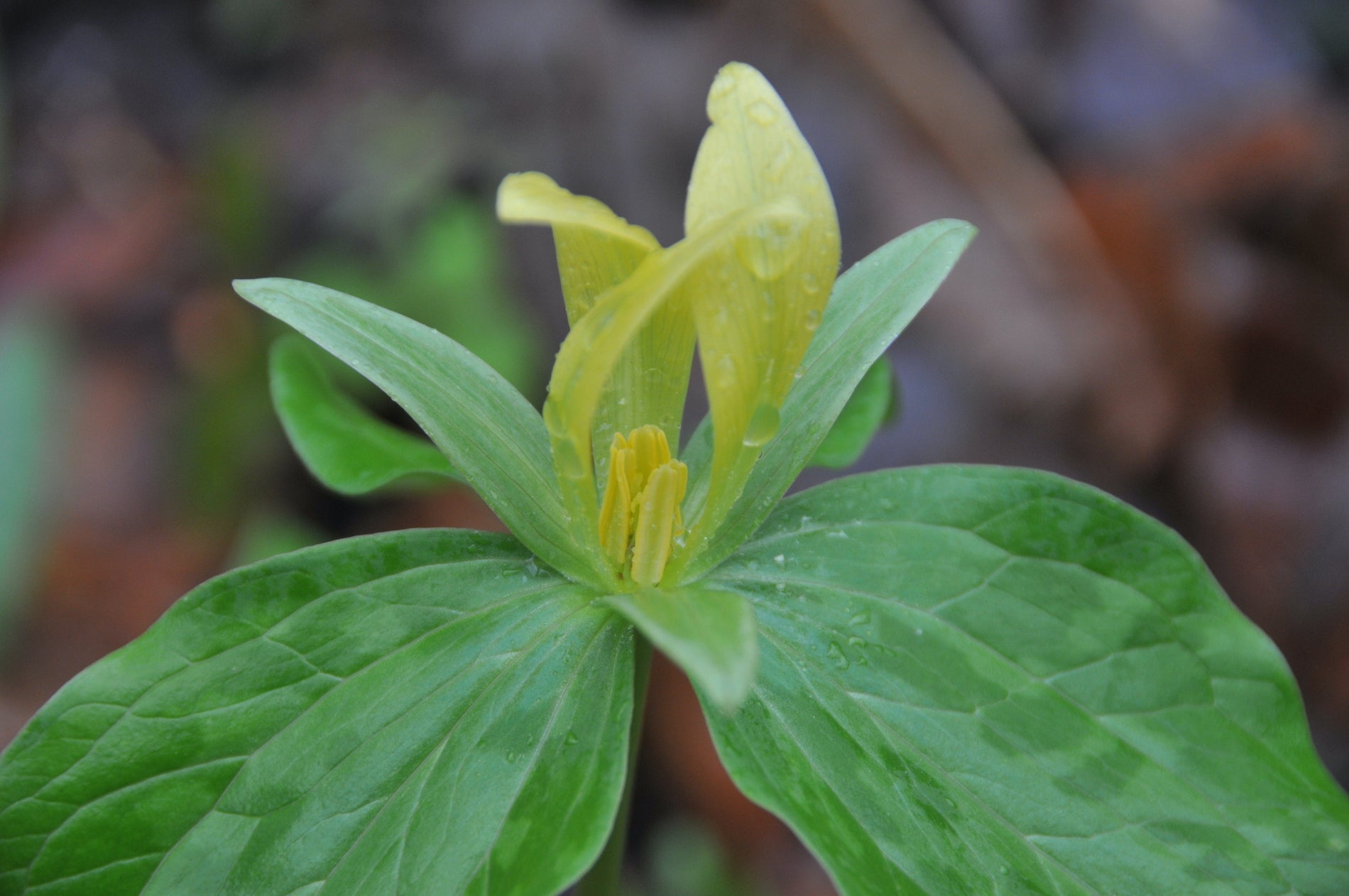Ban on invasive plants ‘great win’ for Delaware conservation
A new Delaware law outlawed the sale and import of invasive plants to better support native ones. It could also help combat the spotted lanternfly invasion.

A path of dogwoods at Mt. Cuba Center Botanical Gardens represents the kind of Delaware native plants a new state law hopes to support. (Courtesy of Mt. Cuba Center)
People selling, importing, or planting invasive species in Delaware could face a $50 to $500 fine when a new state law goes into effect next year.
It’s part of an effort to preserve not only native plant species but also to help support the local insect population, which helps conserve the state’s native animal population.
Non-native plants can destructively crowd out native species.

“They are particularly aggressive in terms of their spreading and their growth habit, and they tend to crowd out the native species,” said Jeff Downing, executive director of the Mt. Cuba Center. The northern Delaware botanical garden covers some 50 acres of what was once a DuPont family estate, which is now used to research and demonstrate the best local plants to cultivate in the First State and the broader region.
“This new law is a real great win for conservation in the state of Delaware,” he said.
Gov. John Carney signed the legislation during the Delaware Center for Horticulture’s “Delaware Naturally” conference, held virtually earlier this month.
“I learned a lot from that legislation and took it to heart,” Carney said. “When I was planting new plants in the back of my house, I went to my neighbor who’s a naturalist working in the area and he gave me a list of native species that I should plant, not the others.”
The bill which outlaws more than three dozen plants got unanimous approval in the General Assembly in January.

“This is not the entire list, but it’s the list that we’re starting with, and it’s a list that will be updated periodically as we go forward by the Department of Agriculture,” said state Sen. Stephanie Hanse, the bill’s primary sponsor.
Hansen credits Doug Tallamy of the University of Delaware’s Entomology and Wildlife Ecology Department as a major driver of the legislation.
“The value of the legislation stems from the realization that invasive plants, and by definition invasive plants are non-natives, destroy habitat,” Tallamy said. “Throughout the world there’s a ton of data that shows that the loss of habitat is the number one cause of the loss of biodiversity, which is a huge problem globally.”

He said sometimes the phrase “loss of habitat” is sometimes misunderstood by the general public.
“They think it’s a place to live, and it is a place to live, but it’s also the food that’s required to live in that place. And that’s where invasive plants cause great problems,” he said.
“[Invasive plants] create places to live that have no food in them, because invasive plants do not support the insects that are the basis of the food webs that really support the animal diversity in our wildlife. So the places look green, but they’re actually ecological dead zones.”
One of the 37 plants prohibited under SB 22 is the Ailanthus altissima, commonly known as the tree of heaven. It’s an especially troublesome species that’s native to Asia. Not only does the tree reproduce rapidly and choke out native plants, it’s also a favorite habitat for the spotted lanternfly. The insect has been spreading in our region and could wreck millions of dollars in ecological damage, according to Penn State researchers.
“When the spotted lanternflies first introduced themselves into the United States, they quickly found that their host tree was already here because it had been brought here,” Downing said. “That’s part of the reason that we’ve seen such an infestation of spotted lanternflies in the last year or two is because their host tree was already here.”
Other banned plants include several species of honeysuckle, English ivy, Chinese wisteria, and the aptly named mile-a-minute weed, which can grow up to six inches in a single day.

While not all non-native plants cause major damage — your tulips aren’t going to take over the forest, Downing says — cultivating more native species will draw more native wildlife to your backyard.
“When you’re adding plants, by adding a native plant here or there or a native tree, you will feed more wildlife and you will see and have the benefit of seeing more butterflies, caterpillars, and birds in your backyard,” he said
Mt. Cuba will offer visitors advice on which native plants are best for their property when the gardens open for the season on April 1. The center’s website has a searchable database that offers similar advice.

Get daily updates from WHYY News!
WHYY is your source for fact-based, in-depth journalism and information. As a nonprofit organization, we rely on financial support from readers like you. Please give today.







